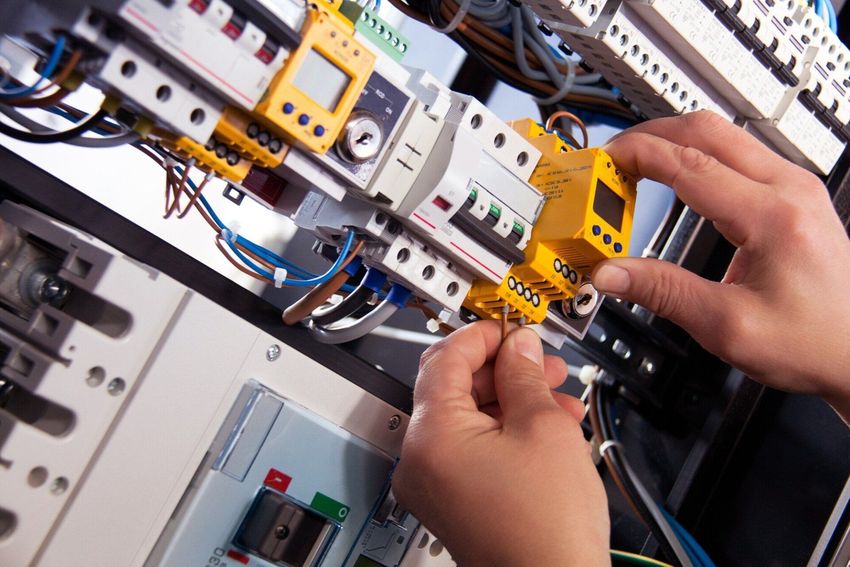Electrical systems are essential in both residential and industrial settings. However, without proper safety measures, they can pose serious hazards such as electric shock, fires, and equipment damage. Grounding and bonding are two critical safety practices that ensure the safe operation of electrical installations. In this article, we’ll explore what grounding and bonding are, their importance, and best practices for implementing them.
1. Understanding Grounding and Bonding 🧠💡
A. What Is Grounding? 🌎
Grounding (also called earthing) is the process of connecting electrical systems to the earth using a conductor. This connection provides a low-resistance path that safely dissipates excess electrical energy, such as lightning strikes or equipment faults, into the ground.
Purpose of Grounding:
- Prevents electric shock by directing stray voltage away from people.
- Protects electrical equipment from damage due to voltage surges.
- Ensures that electrical systems operate correctly and reliably.
B. What Is Bonding? 🔗
Bonding is the process of connecting all metallic components within an electrical system to ensure they have the same electrical potential. This prevents voltage differences that could cause electric shock or sparks.
Purpose of Bonding:
- Reduces the risk of electric shock by eliminating voltage differences.
- Ensures that metal parts, such as pipes and frames, cannot become energized.
- Provides a safe return path for electrical faults, allowing circuit breakers to trip.
2. The Importance of Grounding and Bonding ✅
A. Safety for People and Property 🦺
Proper grounding and bonding reduce the risk of electric shock and prevent electrical fires caused by stray currents. By directing excess electricity safely into the ground, these systems protect both individuals and property.
B. Protection of Electrical Equipment 🏭
Grounding and bonding help prevent damage to electrical equipment caused by voltage surges, lightning strikes, and static electricity. This protection extends the lifespan of electrical devices and reduces maintenance costs.
C. Compliance with Electrical Codes 📜
Most electrical codes, such as the National Electrical Code (NEC) in the United States and the International Electrotechnical Commission (IEC) standards globally, require proper grounding and bonding. Compliance ensures the safety and reliability of electrical installations.
D. Enhanced System Performance ⚡
Grounding and bonding help maintain stable voltage levels, reducing electrical noise and interference. This is especially important in sensitive equipment such as computers, medical devices, and communication systems.
3. How Grounding and Bonding Work Together 🔌
Although grounding and bonding are distinct processes, they work together to create a safe and efficient electrical system. Grounding provides a path for excess electrical energy to dissipate into the earth, while bonding ensures that all metal components remain at the same potential, preventing dangerous voltage differences.
For example, in a residential electrical system:
- The grounding system connects the main electrical panel to a ground rod driven into the earth.
- Bonding connects all metal parts of the electrical system, such as conduit, pipes, and appliance casings, ensuring that they cannot become energized.
4. Key Components of Grounding and Bonding Systems 🧩
- Grounding Electrode Conductor (GEC): A wire that connects the main electrical panel to a grounding electrode, such as a ground rod, water pipe, or building foundation.
- Grounding Electrode: A conductive element, such as a copper rod or metal plate, buried in the earth to provide a low-resistance path for electrical currents.
- Bonding Conductor: A wire that connects all metallic components within the electrical system, ensuring they are at the same potential.
- Main Bonding Jumper: A conductor that connects the neutral bus bar in the main panel to the grounding system, completing the path for fault currents.
- Equipment Grounding Conductor (EGC): A wire that runs alongside circuit conductors, providing a return path for fault currents and connecting equipment enclosures to the grounding system.
5. Best Practices for Grounding and Bonding 🛠️
- Use Proper Materials: Use copper or aluminum conductors of adequate size and ensure all connections are secure and corrosion-resistant.
- Install Correctly: Follow electrical codes and manufacturer instructions when installing grounding and bonding systems.
- Test Regularly: Periodically test grounding systems to ensure low resistance and proper operation.
- Bond All Metal Parts: Connect all metal parts, including pipes, conduits, and frames, to the bonding system.
- Maintain System Integrity: Ensure that grounding and bonding connections remain intact during renovations or equipment upgrades.
6. Common Grounding and Bonding Mistakes ❌
- Improper Grounding: Using incorrect grounding electrodes or failing to connect the system to the earth can result in unsafe voltage levels.
- Loose Connections: Poor connections increase resistance, reducing the effectiveness of grounding and bonding.
- Inadequate Bonding: Failing to bond all metal parts can create voltage differences that pose a shock hazard.
- Overloading the Grounding System: Using the grounding conductor as a return path for normal current is dangerous and violates electrical codes.
7. Grounding and Bonding in Different Environments 🌍
- Residential Installations: Grounding protects homeowners from electric shock, while bonding prevents voltage differences in plumbing and appliances.
- Commercial Buildings: Bonding ensures the safety of metal structures, while grounding protects sensitive electronic equipment from voltage surges.
- Industrial Facilities: Proper grounding and bonding prevent equipment damage, reduce downtime, and ensure worker safety.
- Outdoor Installations: Grounding protects against lightning strikes, while bonding prevents voltage differences in exposed metal structures.
8. Testing and Maintenance of Grounding and Bonding Systems 🧪
Regular testing and maintenance are essential to ensure the effectiveness of grounding and bonding systems:
- Ground Resistance Testing: Measures the resistance between the grounding electrode and the earth, ensuring it is within safe limits.
- Continuity Testing: Verifies that all bonding connections are intact and have low resistance.
- Visual Inspections: Check for loose connections, corrosion, and physical damage to grounding and bonding components.
Conclusion ✅
Grounding and bonding are essential for the safety, reliability, and performance of electrical installations. Grounding provides a safe path for excess electrical energy to dissipate into the earth, while bonding ensures that all metal components remain at the same electrical potential. By following best practices and adhering to electrical codes, you can prevent electric shock, reduce fire hazards, and protect electrical equipment. Regular testing and maintenance are crucial to ensure that grounding and bonding systems remain effective over time.


